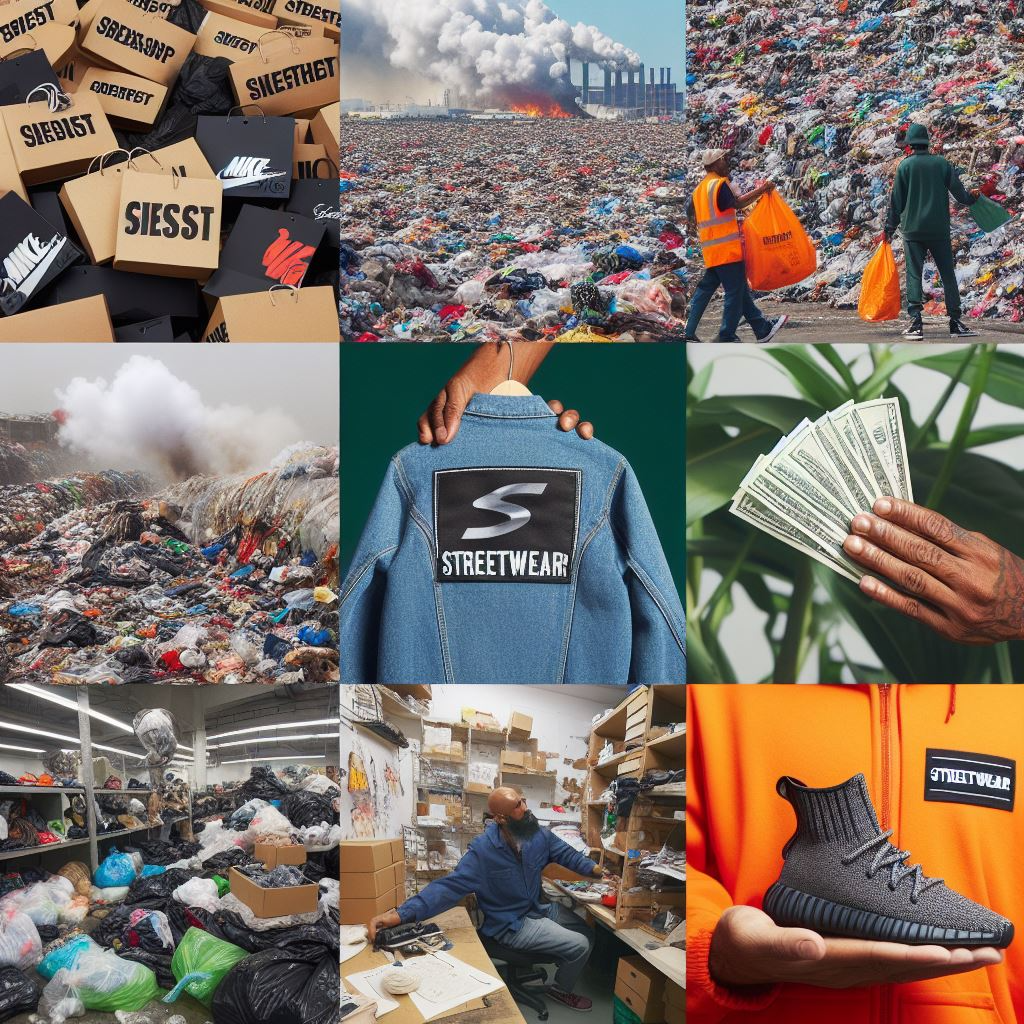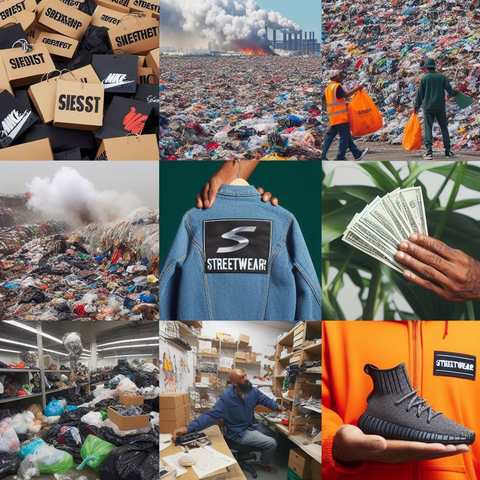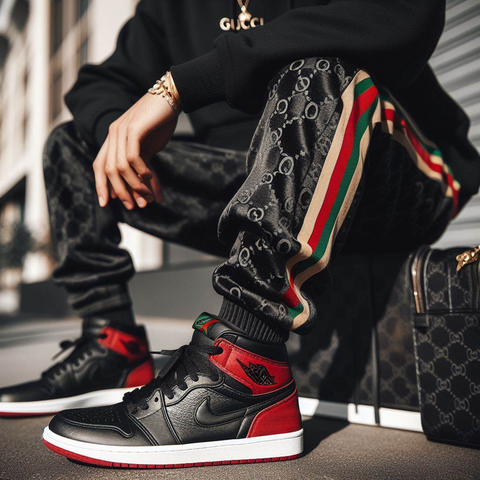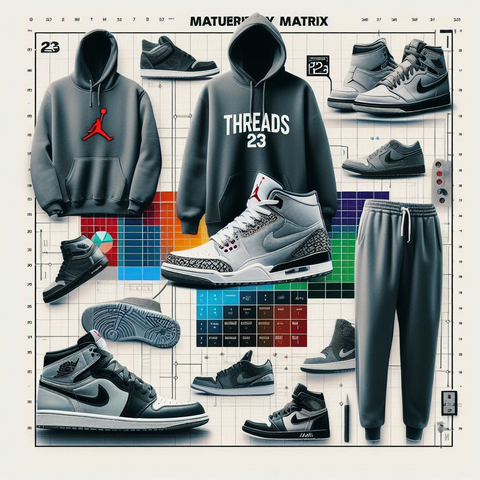
The Dark Side of Your Drip: How Fast Fashion is Wrecking the Planet (and Your Style)
The Dark Side of Your Drip: How Fast Fashion is Wrecking the Planet (and Your Style)

You copped the latest streetwear drop, feeling Lit and On Fire. But have you ever stopped to think about the true cost of that fire fit? Buckle up, sneakerheads and fashionistas, because we're about to dive deep into the dark side of fast fashion. Spoiler alert: it's not a pretty picture.
Did you know the average person is basically a shopping fiend, buying 60% more clothes every year and ditching them twice as fast compared to just 15 years ago? That's the reality of fast fashion, a trend-chasing machine that pumps out cheap clothes at breakneck speed. While it satisfies our desire to stay Lit on a budget, there's a hidden price tag: one that hurts the environment and exploits people. We're talking pollution, mountains of textile waste, and working conditions that would make Scrooge say "hold my eggnog."
Ready to learn more about the impact of your wardrobe choices? Stay tuned as we break down the fast streetwear fashion phenomenon, expose its dirty secrets, and explore ways to keep your style game on point without being a planet-polluting fashion criminal. Remember, looking good shouldn't cost the Earth (or your conscience).
The Fast Fashion Streetwear Frenzy: From Trend to Landfill in Record Time
Remember that fire sweatsuit you scored for a steal? Turns out, the "fast" in fast fashion applies not just to trends, but also to the production process. Buckle up as we dissect the machinery behind those rock-bottom prices.
Imagine a world where new trends drop faster than you can say "Yeezy." That's the reality of fast fashion, where brands like SHEIN, Zara, and H&M churn out trendy pieces at lightning speed. These clothes are designed to be disposable, meant to last just a few wears before being tossed aside for the next hot trend.
But here's the catch:

Think about it: While you might be rocking the latest Air Jordan Retro 13 kicks, the fast streetwear fashion machine might be leaving a trail of destruction behind the scenes.
Ready to dig deeper? Stay tuned as we expose the environmental and social costs of the fast fashion frenzy, and explore ways to break free from the cycle and rock a more sustainable style. Remember, looking good shouldn't come at the expense of the planet or the people who make your clothes.
Fashion's Dirty Laundry: The Environmental Cost of Looking Lit

You love your new threads, but do they love the planet? Buckle up as we unveil the shocking environmental impact of fast fashion, exposing the industry's dirty laundry list.
Fast fashion might be trendy, but its environmental footprint is anything but. Here's a glimpse into the hidden costs
Looking good shouldn't cost the Earth. The environmental impact of fast fashionstreetwear sneakerheadfashion
Looking good shouldn't cost the Earth. The environmental impact of fast fashion is undeniable, leaving a trail of water depletion, pollution, and textile waste. It's time to move beyond the "wear it once" mentality and embrace a more sustainable approach to streetwear sneakerhead fashion.
Stay tuned as we explore ethical and sustainable alternatives to fast fashion in the next section. Remember, small changes in your swag can make a big difference for the planet.
The Human Cost of Your Threads: Exposing Exploitation in the Fast Fashion Industry
Behind the trendy facade of fast fashion lies a dark reality - the exploitation of garment workers. Buckle up as we shed light on the human cost hidden behind your favorite men's streetwear sneakerhead outfits.

The low prices of fast streetwear or any fast fashion come at a human cost, often borne by garment workers in developing countries. These workers, predominantly women and children, toil under harsh conditions for meager wages, facing:
The human cost of fast fashion extends beyond the workers:
Remember:
The streetwear clothes you wear shouldn't come at the expense of another human being's well-being. It's crucial to recognize the human cost of fast fashion and choose brands that prioritize ethical labor practices.
Stay tuned as we explore alternative ways to stay Lit without contributing to the exploitation of garment workers. In the next section, we'll delve into the influence of social media and how it fuels the fast fashion cycle.
The Double-Tap Dilemma: How Social Media Fuels Fast Fashion Frenzy




Ever scrolled through social media endless feeds of perfectly curated men's streetwear outfits, feeling the urge to add them all to your cart? Buckle up as we dive into the complex relationship between social media, influencers, and the fast fashion phenomenon.
Social media has become a powerful platform for fashion trends, with influencers showcasing their latest hauls and outfits, often promoting fast fashion brands. This creates a double-edged sword:
It's important to be mindful of the curated reality presented on social media and to distinguish between inspiration and manipulation. Don't let the pressure to keep up with the latest streetwear trends dictate your purchasing decisions.
Stay tuned as we explore alternative approaches to streetwear fashion in the next section. We'll delve into sustainable practices and ethical brands that prioritize quality and conscious consumption over fleeting trends. Remember, true style transcends fleeting trends and embraces individuality.
Sustainable Threads: Weaving a Fashion Future for the Planet

Ready to ditch the fast fashion or streetwear frenzy and embrace a more sustainable approach to style? Buckle up as we explore ethical alternatives and weave a fashion future that's good for you and the planet.
The good news is, you don't have to sacrifice style for sustainability. Here are some ways to embrace a more conscious wardrobe:
Remember:
Sustainable fashion isn't just about the clothes; it's about conscious consumption and making informed choices that benefit the environment and the people who make your clothes.
Ready to take action? We'll provide resources and tips on finding sustainable streetwear fashion brands, shopping secondhand, and caring for your clothes in the next section.
Remember, small changes in your swag can make a big difference.
Conclusion: Stepping Off the Fast Fashion Treadmill

So, you've learned the dark side of fast fashion and are ready to step off the trend treadmill. Buckle up as we wrap up and offer practical steps to embrace a more sustainable and stylish future.
Fast fashion may offer quick thrills, but the cost to the environment and the people who make our streetwear clothing is simply too high. By understanding the true impact of our choices, we can move towards a more conscious and ethical approach to streetwear fashion.
Remember:

We've provided you with the knowledge and some initial steps. Now it's your turn to take action! Stay tuned for the next Threads On Fire sneakerhead blog post, where we'll offer resources and practical tips to help you navigate the world of sustainable streetwear fashion. Remember, together, we can rewrite the streetwear fashion narrative and create a future where swagger meets sustainability.








